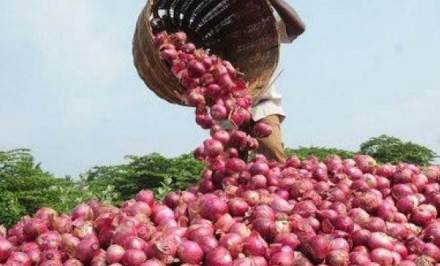With the wedding season almost coming to an end and summer onion coming into the markets, the focus among farmers and traders alike in Maharashtra is on storage. As a result, arrivals have begun to dip and there is a possibility of a price rise in the next fortnight, according to top market officials in Nashik region. More significantly, cash payments have begun to make a comeback in most markets with cases of bounced cheques on the rise. On Thursday, market arrivals at Lasalgaon, the country’s largest market for the bulb, dipped to 9,000 quintals from an average of 14,000 quintals in the last week while arrivals at neighbouring Pimpalgaon also dipped to some 12,450 quintals on Thursday with modal prices dropping to Rs 700 per quintal. Lasalgaon prices have remained more or less steady at around Rs 650 per quintal over the week. The harvest of summer onions is on in full swing.
According to Atmaram Kumbhar, chairman, Chandwad Agriculture Market Produce Committee (APMC), demand is usually slack during the wedding season and since the summer onion can be stored, farmers now prefer to store the onion in anticipation of better prices. As a good monsoon is predicted this year as well, one can expect another bumper crop, he said, adding that sowing should commence after June-July and the new crop should hit markets between August to November. That is when one can expect farmers to bring out the stored onion, Kumbhar said.
According to industry observers, the high volatility in onion prices stems from lack of storage facilities which have not kept pace with rising production. Maharashtra uses Rashtriya Krishi Vikas Yojana and National Horticulture Mission and created 42,282 low cost onion storage structures having a capacity of 9.65 lakh tonne.
According to Kumbhar, the storage situation could be ascertained only after May when the storage figures would become clear since most farmers end up using informal structures to store their produce. The crop is sown in December-January and is out in the market by April. Due to its high yield and storage capacity, farmers tend to store it in their sheds and sell it in batches till October. Maharashtra presently accounts for close to 30 % of India’s onion production. Meanwhile, cash payments have begun to make a comeback in most of the APMCs in Nashik district. The Kalwan Agriculture Produce Marketing Committee has now mandated that traders buying onion or grain must pay farmers in cash and not through cheque.
Till November 2016, transactions in Kalwan’s agriculture markets, like in much of the country’s informal economy, were conducted entirely in cash. Often, the trade was as much off the books as on them. After Modi government banned Rs 1,000 and Rs 500 currency notes, liquidity crunch forced traders to switch to cheque payments. Chandwad and Pimpalgaon are the two other markets that switched to cash payments after demonetisation.
Kumbhar pointed out that there were instances of cheque bounces and there was no way of keeping a check on cheque payments and farmers often faced the short end of the stick which is why the market committee encourages cash payments.
Although Lasalgaon APMC encourages same day cheque payments, farmers would still prefer cash and immediate liquidity in hands, market committee officials said, adding that a special squad ends up making surprise visits on traders to find out if the cheque payments were being cleared. Kumbhar pointed out that despite facing problems, Lasalgaon continues to remain with the cheque payment system since it is the largest wholesale market in the country. Majority of the 14 odd market committees in Nashik district now prefer cash payments although they may not publicly declare it, market officials revealed.
